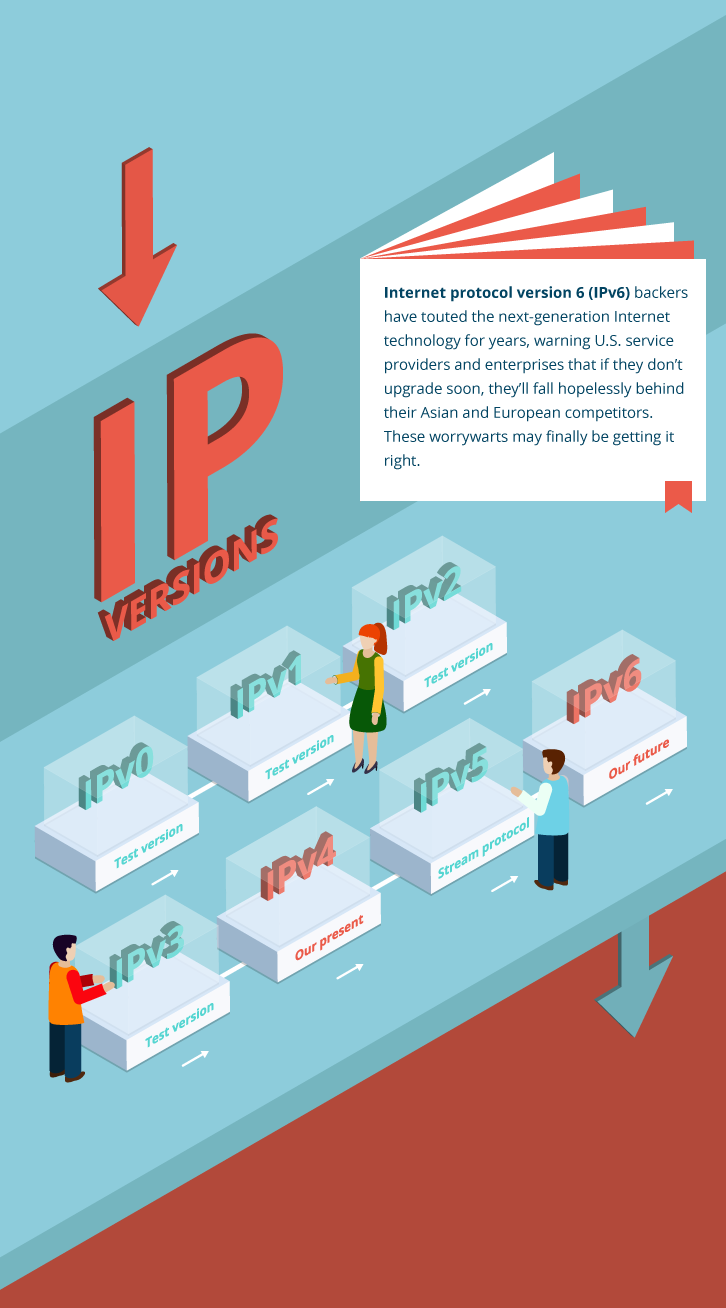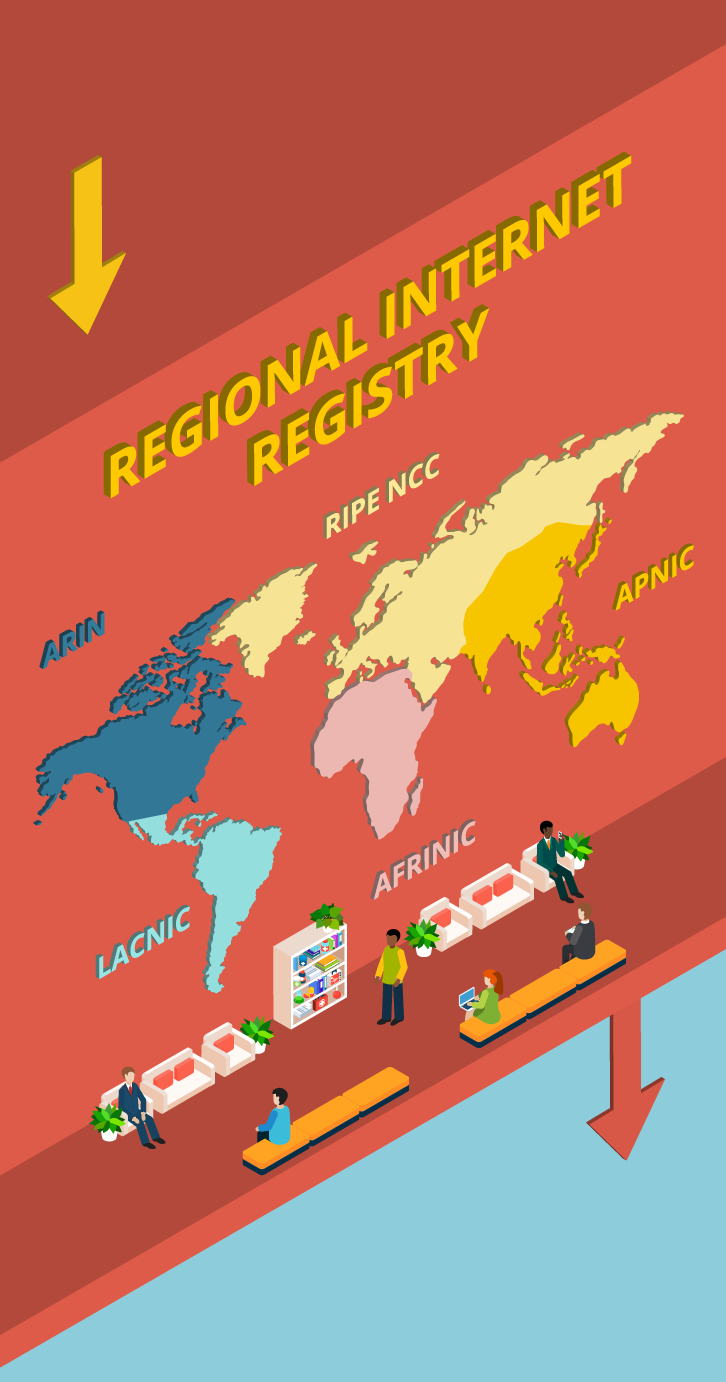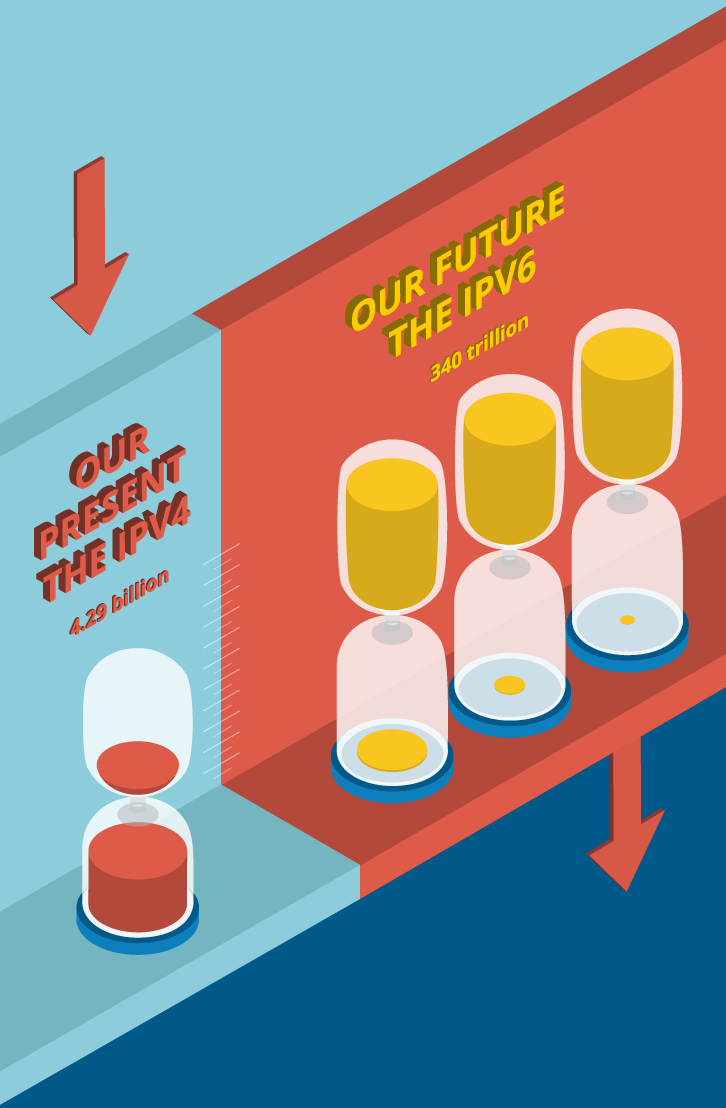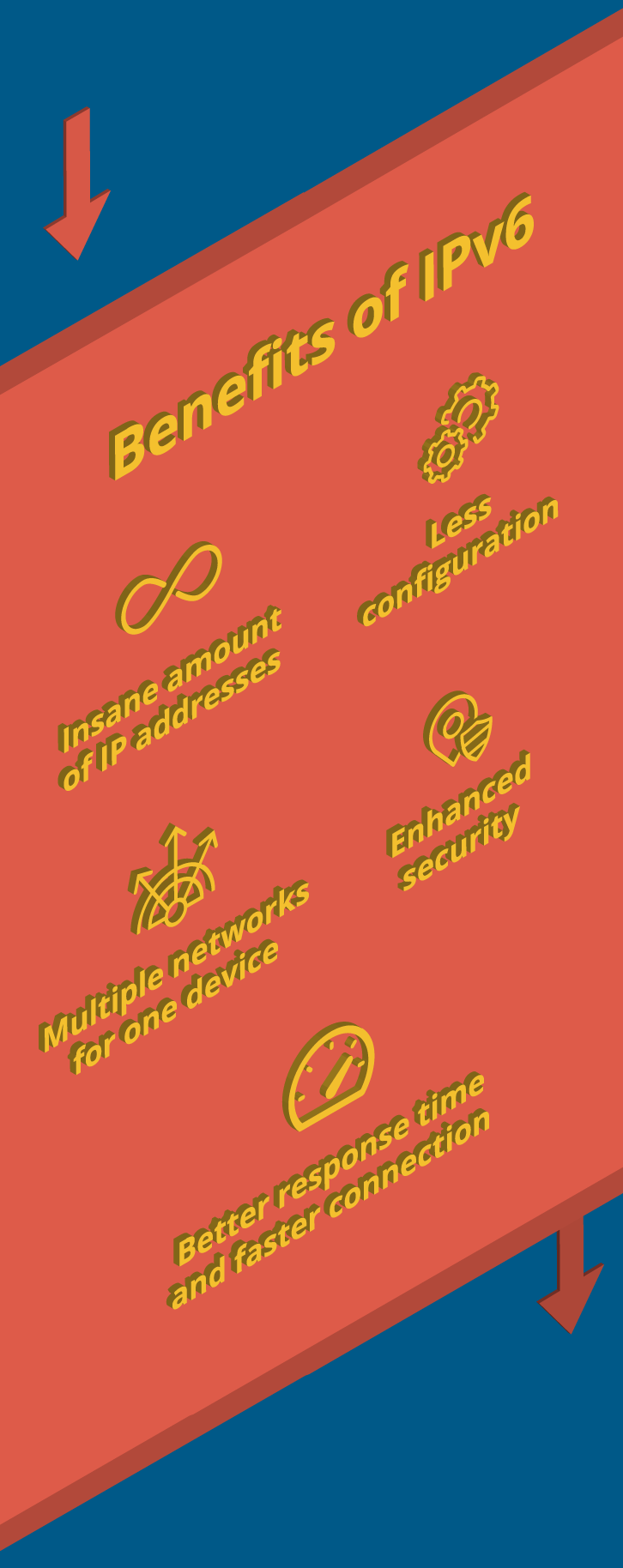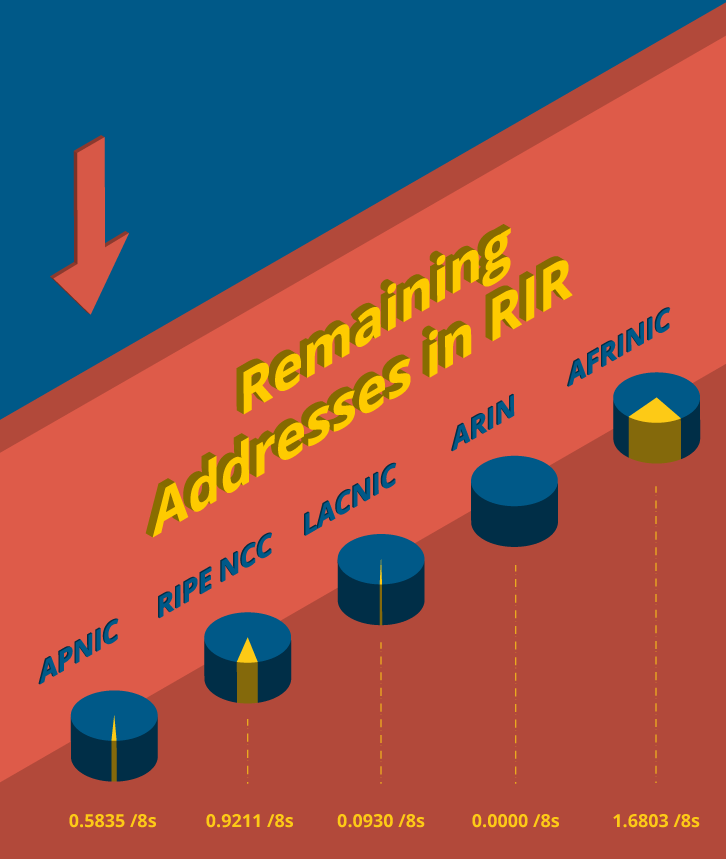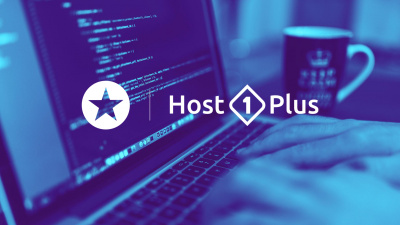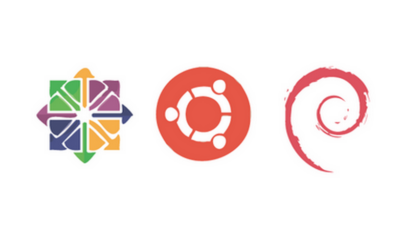The Future Is Here: IPv6
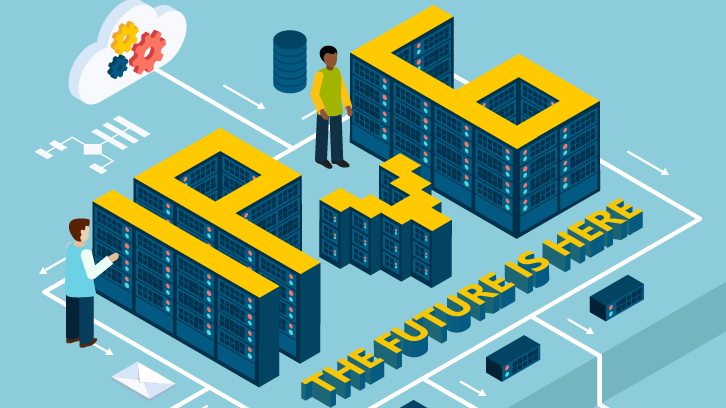
History and predecessors
IP versions
IP versions from 0 to 3 were experimental versions, used between 1977 and 1979. The following Internet Experiment Note (IEN) documents describe versions of the Internet Protocol before the modern version of IPv4:
- IEN 2 (Comments on Internet Protocol and TCP), dated August 1977, describes the need to separate the TCP and Internet Protocol functionalities (which were previously combined.) It proposes the first version of the IP header, using 0 for the version field and known as IPv0.
- IEN 26 (A Proposed New Internet Header Format), dated February 1978, describes a version of the IP header that uses a 1-bit version field, thus becoming IPv1.
- IEN 28 (Draft Internetwork Protocol Description Version 2), dated February 1978, describes IPv2.
- IPv3 didn’t reach daylight and was somewhere between IPv2 and IPv4. Perhaps, a transition?…
- IEN 41 (Internetwork Protocol Specification Version 4), dated June 1978, describes the first protocol to be called IPv4. The IP header is different from the current IPv4 header.
Introduction to Regional Internet Registry
A Regional Internet Registry (RIR) is an organization that manages the allocation and registration of Internet number resources within a particular region of the world. Internet number resources include IP addresses and autonomous system (AS) numbers.
5 RIRs for 7 continents
The Regional Internet Registry system evolved over time, eventually dividing the world into five RIRs:
- African Network Information Center (AFRINIC) for Africa.
- American Registry for Internet Numbers (ARIN) for the United States, Canada, several parts of the Caribbean region, and Antarctica.
- Asia-Pacific Network Information Centre (APNIC) for Asia, Australia, New Zealand, and neighboring countries.
- Latin America and Caribbean Network Information Centre (LACNIC) for Latin America and parts of the Caribbean region.
- Réseaux IP Européens Network Coordination Centre (RIPE NCC) for Europe, Russia, the Middle East, and Central Asia.
What we use now, and why is it not enough anymore?
Our Present – the IPv4
IPv4 stands for Internet Protocol version 4. It is the underlying technology that makes it possible for us to connect our devices to the web. Whenever a device accesses the Internet (whether it’s a PC, Mac, smartphone or another device), it is assigned a unique, numerical IP address such as 99.48.227.227.
To send data from one computer to another via the Internet, data packets must travel across the network containing the IP addresses of both devices.
Without IP addresses, computers would not be able to communicate and send data to each other. It’s essential to the infrastructure of the web, thus in 1983, IPv4 was developed and deployed to use worldwide till today.
Why are we running out of IPv4 addresses?
IPv4 uses 32-bits for its Internet addresses. That means it can support 2^32 IP addresses in total — around 4.29 billion. That may seem like a lot, but all 4.29 billion IP addresses have now been assigned to various institutions, leading to the IPv4 depletion crisis we face today.
Let’s be clear, though – we haven’t run out of addresses quite yet. Many of them are unused and in the hands of institutions like MIT and companies like Ford and IBM.
More IPv4 addresses are available to be assigned, and more will be traded or sold (since IPv4 addresses are now a scarce resource), but they will become a more limited commodity over the next two years until it creates a problem for the web.
What is Internet Protocol version 6 (IPv6)?
IPv6 is short for “Internet Protocol Version 6”. IPv6 is the Internet’s next-generation protocol, designed to replace the current Internet Protocol, IP Version 4.
IPv6 is a standard developed by the Internet Engineering Task Force (IETF), an organization that develops Internet technologies. The IETF, anticipating the need for more IP addresses, created IPv6 to accommodate the growing number of users and devices accessing the Internet. As mentioned before, IPv4 uses 32-bit addresses, which allows 4.29 billion unique addresses.
In comparison, IPv6 addresses are 128 bits, which allow for approximately three hundred and forty trillion unique IP addresses. A lot, huh?
An example of an IPv6 address is:
2001:db8:ffff:1:201:02ff:fe03:0405
World IPv6 Launch day
World IPv6 Launch began on 6th June 2012, and this year – the 2nd “Launchiversary” – marks the fourth straight year IPv6 use has doubled. If current trends continue, more than half of all Internet users will be IPv6 connected in less than four years!
This time, it is for real!
Major Internet service providers (ISPs), home networking equipment manufacturers, and web companies around the world united to redefine the global Internet and permanently enable IPv6 for their products and services on 6th June 2012.
Some of the participants that you, for sure know are:
AT&T, D-Link, Google, Comcast, Free Telecom, Cisco, Yahoo!, Limelight Networks, Internode, Microsoft Bing, Facebook, Akamai Technologies, KDDI, and others...
Since then, participation in the World IPv6 Launch and the use of IPv6 around the world has continued to grow and is immensely increasing!
Benefits of IPv6 vs. IPv4
Okay, let’s dig a little deeper and be a tad bit techier…
Everyone knows that IPv6 offers an insane amount of IP addresses compared to IPv4, but what are the other benefits of IPv6?
One interesting feature of IPv6 is that addresses can be assigned automatically and dynamically by the client device, meaning that there is no need for a DHCP server. It means that you can plug a laptop to your local network, and it will get an address prefix from any router it finds and then generate an IP for itself for that network, based on the hardware MAC address.
In practice, this means simpler routers and less overhead for managing IP attribution. It will also mean even fewer configuration requirements.
Of course, you can still assign addresses to devices via DHCPv6, but that’s up to you.
Multiple network addresses allocated to the same device is another interesting feature that IPv6 brings to us. You get the ability to assign two or more addresses to the same device. You can thus stay connected to several networks at the same time, which is a great boon for flexibility.
Apps will be able to choose the network they need or have access to, and you won’t have to choose between networks anymore.
You thought that was all to IPv6? You’re wrong! It’s far from what IPv6 brings to us!
Developers at Internet Engineering Task Force had security as their primary goal from the very beginning. Therefore, encryption and IPsec comes built-in!
This means that the communications will be secured at the lowest level possible, via IPsec, each packet that gets sent has to be decrypted for it to be interpreted. Yay!
Also, on the technical side, IPv6 gets rid of checksum verification. Since everything, or almost everything, sent via IPv6 networks has its error-control mechanism, there is no need for one at the IP level.
This clears the overhead added by the need to do checksums at every step, leading to a more responsive and faster connection.
Interesting facts about IPv6
On January 12, 2011, five anchoring companies: Facebook, Google, Yahoo!, Akamai Technologies, and Limelight Networks carried out a test of IPv6. This day is marked in history as World IPv6 Day.
One unexpected consequence is that IPv6 addresses are hexadecimal – and, therefore, contain the letters a-f. This hasn’t been lost on the network boffins at the big sites that were taking part in the experiment. Look at it yourself:
- Facebook – 2620:0:1c08:4000:face:b00c::
- BBC – 2001:4b10:bbc::1
- Cisco – 2001:420:80:1:c:15c0:d06:f00d
- US Department of Commerce – 2610:20:0:20:5ec:d0c:d0c:d0c
- 2020Media has gone for the simple – 2a00:19e8:20:20::20
- SysAdmins everywhere have enjoyed inserting their favorite beverage into addresses :c0:ffee
- Finally… Lancaster University Network Services have gone for the schoolboy favourite: 2a01:8900:0:1::b00b:1e5
IPv4.. IPv6.. Ipv5 went missing?!
In the late ’70s, IPv5 was named ST, the Internet Stream Protocol. IPv5, or ST as it was known, was used by the likes of Apple, NeXT, and Sun to guarantee service across a network. ST was good at maintaining communication while transferring specific data packets on select frequencies.
IPv5 was merely created for experimental reasons, specifically for video and voice transmissions.
There is an old joke that is traveling from person to person in the vast waters of the Internet:
“Did you know? IPv5 is available only for Windows 9…”
What the future holds for us?
Depletion of Ipv4
The era of freely available IPv4 addresses has come to an end as Regional Internet Registries are now assigning their last few remaining IPv4 addresses. Many of the largest mobile and broadband networks in the world are actively rolling out IPv6 connectivity to their end-users, with legacy IPv4 on a path to be increasingly funneled through resource-constrained Carrier-Grade NATs (CGNATs).
Making web content, sites, and applications available dual-stacked over both IPv6 and IPv4 will become increasingly critical. With smart planning, the upgrade process does not have to be daunting or disruptive. However, web-enabled businesses do need to be cautious when deploying IPv6 transition technologies to reach their audiences across a hybrid IPv4/IPv6 Internet while retaining performance, reliability, and security.
Attention is required – only one region is left that has IPv4 resources!
You can check how many IPv4 addresses are left with this little tool from Potaroo. From a report generated on March 24th, 2016, only one RIR (AFRINIC) has available IPv4 addresses left for use.
Exhaustion dates of IPv4 in RIRs:
APNIC - April 19th, 2011
RIPE NCC - September 14th, 2012
LACNIC - June 10th, 2014
ARIN - September 24th, 2015
AFRINIC - expected to run out of IPv4 on April 27th, 2018
Consider taking actions
While the primary reason for IPv4 address exhaustion is insufficient to design the capacity of the original Internet infrastructure, several additional driving factors have aggravated the shortcomings.
- Mobile devices;
- Always-on connections;
- Internet demographics;
- Inefficient address use.
Each of them increased the demand on the limited supply of addresses, often in ways unanticipated by the original designers of the network.
Why should you?
We have to take action to resolve this problem because there are only 4.29 billion IPv4 addresses, almost twice that number lives on earth (7.4 billion), and there are nearly 12 times more (around 50 billion) devices connected to the Internet than there are IPv4 addresses.
When should you do it?
Now! Just kidding… You don’t have to jump head-on for IPv6, but if you have your own business, consider the transition to IPv6 or, at least, hybrid IPv4/IPv6 in the upcoming year.
How do you feel about IPv4 depletion? What are your thoughts on IPv6? Do you think that transferring to IPv6 is necessary?
